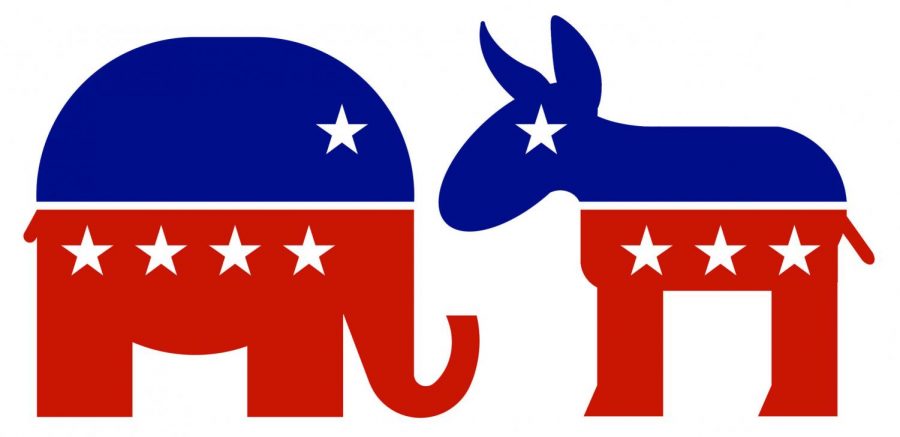Social media amplifies the split between political parties
Social media pits the two political parties against each other and fuels partisan hate.
December 3, 2018
The current generation of teenagers are inseparably associated with social media. Although many people view platforms such as Instagram and Twitter as ways of staying updated about the lives of peers and celebrities, social media is also a major vehicle for the spread of political ideas.
The truth is, social media portrays a distorted view of politics, with popular “activist” accounts often endorsing far-right or far-left ideologies. But in reality, most people are somewhere in between these two extremes.
Partisan divides exacerbated by social media should not get in the way of informed decision-making; in this day and age, though, they do. It’s important that today’s high school students do not exclusively rely on social media to form their political stances because some Grady students are already registered voters, and for many others, it’s only a matter of time.
The Internet and social media allow people to send information to a large audience in a short amount of time. Notice of tragedies, accidents, attacks and political races throughout the country can reach millions of people within minutes. For this reason, many young people use these platforms as their main source of news. However, news in the form of Tweets is not subject to the same careful oversight as a story from a real publication, and it’s easy to find extremely biased statements presented as “news.” For example, a Democrat and a Republican might make posts about the same terror attack and portray it in marginally different ways, but this bias would be less noticeable in a report by a credible news organization.
Social media has also contributed to a more polarized split between Democrats and Republicans than previous generations. On Instagram, Twitter and other platforms, it’s easy to find examples of extremist views from both sides. Seeing such views from a member of one’s own party can influence a person to adopt similar radical views. On the other hand, seeing extremist views from the opposite party can fuel hostility and enmity between the parties, even if most members of the party do not have the same radical standpoint.
This directly contributes to the stereotyping of members of the opposite party. The term “liberal snowflake” implies that people with left-wing views are sensitive and irrational. On the other hand, people stereotype conservatives as uneducated or evil. Social media makes it easy to blow these stereotypes out of proportion and fuel partisan opposition.
Social media is not a purely negative force in the world of politics: the recent midterm elections saw a high voter turnout among young voters spurred by encouragement from candidates, peers and celebrities on social media. However, due to the animosity between the parties, some people view politics as such a hassle that they choose not to vote. Our country is based on a democratic system, so it is vital that voters are engaged. Voter apathy in the younger generation results in leaders who don’t reflect the changing political views of our nation.
Instagram, Twitter and other platforms portray the political parties as having a fixed set of ideologies, and if people express views outside of those “standards” they are targeted and criticized by members of their own party. As social media becomes more ubiquitous, it seems that people are becoming more afraid to disagree with their party’s platforms.
American citizens must work to preserve the political institutions that this country is based on, and social media has turned politics and voting into a rage-fueled, partisan process devoid of independent ideas or dissenting opinions within parties. High school students, the future and current voters of this generation, must be wary of the effects of social media on their political views in order to reduce the divide between Democrats and Republicans.






